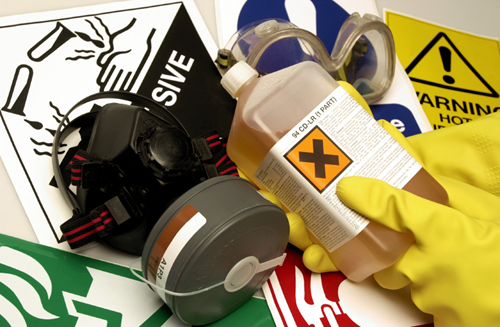Toxic Effects
Types of Toxic Effects
Many factors play a potential role in toxicity. The dosage (or amount of exposure) is the most important factor. A well-known saying, "the dose makes the poison" speaks to this principle. The full saying credited to Paracelsus is "All things are poison and nothing is without poison; only the dose makes a thing not a poison."
Toxicity can result from adverse cellular, biochemical, or macromolecular changes. Some examples are noted below.
Many chemicals distribute in the body and often affect only specific target organs. However, other chemicals can damage any cell or tissue that they contact. The target organs that are affected may vary depending on dosage and route of exposure. For example, the central nervous system may be the target organ for toxicity from a chemical after acute exposure whereas the liver may be affected after chronic exposures.
Types of Toxic Effects
Many factors play a potential role in toxicity. The dosage (or amount of exposure) is the most important factor. A well-known saying, "the dose makes the poison" speaks to this principle. The full saying credited to Paracelsus is "All things are poison and nothing is without poison; only the dose makes a thing not a poison."
Toxicity can result from adverse cellular, biochemical, or macromolecular changes. Some examples are noted below.
Many chemicals distribute in the body and often affect only specific target organs. However, other chemicals can damage any cell or tissue that they contact. The target organs that are affected may vary depending on dosage and route of exposure. For example, the central nervous system may be the target organ for toxicity from a chemical after acute exposure whereas the liver may be affected after chronic exposures.
Figure 1. Central nervous system (left); Liver (right)
(Image Source: Adapted from iStock Photos, ©)
(Image Source: Adapted from iStock Photos, ©)
Chemicals can cause many types of toxicity by a variety of mechanisms. Some act locally such as when direct exposure triggers skin or eye irritation, whereas other chemical cause systemic effects in the body in sites remote from where the actual exposure occurred. Toxicity can act directly affect subcellular components, such as cell receptors, or it can cause problems at the cellular level, such as with exposures to caustic or corrosive substances.
|
For example, chemicals might:
Some chemicals may also act indirectly by:
|
Figure 2. Chemicals can have a wide range of toxic effects
(Image Source: iStock Photos, ©) |
|
Did you know?
Mercury is a naturally occurring heavy metal. Methylmercury , the most common organic mercury compound, can be formed in water and soil by bacteria. It builds up in the tissues of fish. Exposure to high levels of mercury and mercury compounds can cause death or permanently damage the brain and kidneys. In the late 1950s, people living around Japan's Minamata Bay developed symptoms of severe methylmercury poisoning, some of whom died. Children exposed in utero were born with disabilities. Investigations showed that heavily contaminated sludge from a factory had been released into the bay, contaminating fish and shellfish. People who ate the fish and shellfish became ill. The events led to a better understanding of industrial pollution and how heavy metals can accumulate in systems. In January 2013 the Minamata Convention on Mercury global treaty was agreed to by an intergovernmental committee. It seeks to protect human health and the environment from the adverse effects of mercury. |
Figure 3. Fish and shellfish became contaminated with mercury, causing severe methylmercury poisoning in people and animals who consumed them
(Image Source: iStock Photos, ©) |
Because chemicals can affect organisms by different mechanisms and at the molecular level, there are new ways to conduct toxicity testing.
An emerging approach is to use Adverse Outcome Pathways (AOPs), which evaluate changes in normal cellular pathways. AOPs reflect the move away from high-dose studies in laboratory animals for toxicity testing to in vitro methods that evaluate changes in normal cellular pathways using human-relevant cells or tissues.
Other terms that describe changes resulting from the exposure of a living organism to a substance include mode of action (MoA) and mechanism of action (MOA).
More information about toxicity testing can be found in the Hazard Identification section.
An emerging approach is to use Adverse Outcome Pathways (AOPs), which evaluate changes in normal cellular pathways. AOPs reflect the move away from high-dose studies in laboratory animals for toxicity testing to in vitro methods that evaluate changes in normal cellular pathways using human-relevant cells or tissues.
Other terms that describe changes resulting from the exposure of a living organism to a substance include mode of action (MoA) and mechanism of action (MOA).
- Mode of action (MoA) (older term) — describes a functional or anatomical change at the cellular level.
- Mechanism of action (MOA) — describes such changes at the molecular level.
More information about toxicity testing can be found in the Hazard Identification section.




